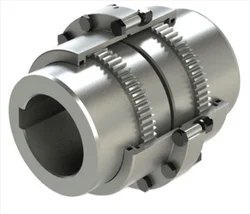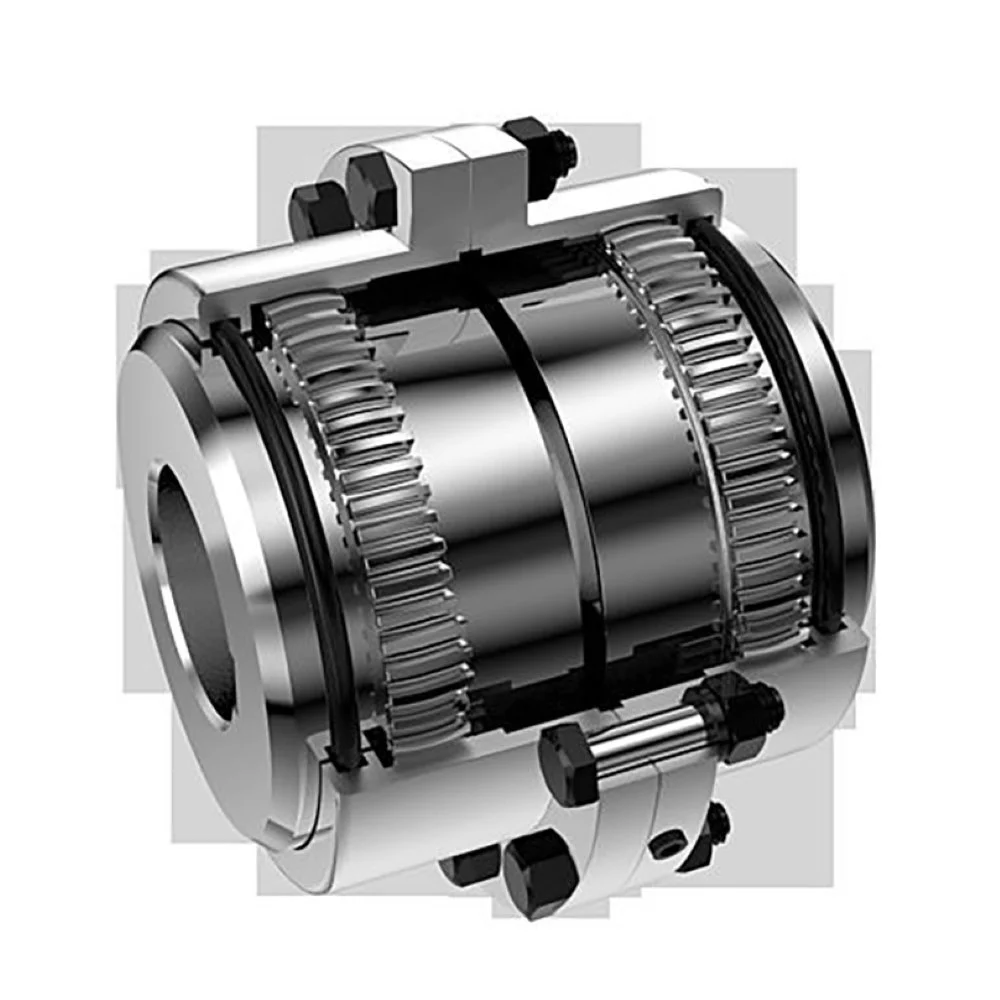Product Description
High Quality Steel Tooth Flexible Rubber Plastic Falk Flexible Nylon Sleeve Universal Joints Chainbox Muff Gear Coupling Replacement of Bowex Coupling
A gear coupling is a type of mechanical coupling that is used to connect 2 shafts at their ends to transmit torque and rotational motion. It consists of 2 hubs with external teeth connected by a flexible element, typically a sleeve or a disk, with internal teeth.
The hubs are usually made of steel or other high-strength materials, and the teeth are cut using precision machining techniques to ensure proper fit and alignment. The flexible element is designed to compensate for any misalignment between the 2 shafts and to allow for a slight amount of angular and axial misalignment during operation.
Gear couplings are commonly used in heavy-duty applications, such as in large machinery and industrial equipment, where high torque and precision are required. They are also used in applications where shafts are subjected to significant amounts of vibration and shock, such as in marine and aerospace applications.
One of the advantages of gear couplings is that they are highly efficient at transmitting torque, with very little energy loss. They are also durable and require minimal maintenance, making them popular in many industries.
/* January 22, 2571 19:08:37 */!function(){function s(e,r){var a,o={};try{e&&e.split(“,”).forEach(function(e,t){e&&(a=e.match(/(.*?):(.*)$/))&&1

Materials Used in Manufacturing Tooth Couplings
Common materials used in manufacturing tooth couplings include:
- Steel: Steel is a popular choice due to its high strength and durability. It can handle heavy loads and is suitable for a wide range of applications.
- Cast Iron: Cast iron is known for its excellent wear resistance and ability to dampen vibrations. It is often used in applications where shock absorption is important.
- Stainless Steel: Stainless steel is corrosion-resistant and can withstand harsh environments, making it suitable for industries like food processing and marine applications.
- Aluminum: Aluminum is lightweight and offers good corrosion resistance. It’s commonly used in applications where weight reduction is important.
- Bronze: Bronze is used for its self-lubricating properties and resistance to corrosion. It’s often employed in applications where lubrication is challenging.
The choice of material depends on factors such as the specific application, operating conditions, and required performance characteristics. Engineers select materials that offer the best combination of strength, durability, corrosion resistance, and other properties needed for the intended use of the tooth coupling.

Best Practices for Lubricating and Preserving Tooth Coupling Performance
Proper lubrication is essential for preserving the performance and extending the lifespan of tooth couplings. Here are the best practices for lubricating tooth couplings:
- Choose the Right Lubricant: Select a lubricant that is compatible with the material of the coupling and its operating conditions. Consult manufacturer recommendations for suitable lubricants.
- Regular Lubrication: Establish a regular lubrication schedule based on the coupling’s usage and operating conditions. Over-lubrication can cause issues, so follow recommended intervals.
- Clean Before Lubrication: Clean the coupling’s teeth and surfaces before applying lubricant to prevent debris and contaminants from mixing with the lubricant.
- Use Appropriate Amount: Apply the appropriate amount of lubricant to ensure proper coverage of the teeth and other moving parts. Excessive lubrication can attract dirt and lead to other problems.
- Distribute Lubricant Evenly: Ensure that the lubricant is evenly distributed across the teeth and mating surfaces for consistent lubrication during operation.
- Monitor Performance: Regularly monitor the coupling’s performance, noise levels, and any unusual vibrations. Changes in performance may indicate inadequate lubrication or other issues.
- Inspect and Reapply: During maintenance intervals, inspect the coupling for signs of wear or inadequate lubrication. Reapply lubricant as needed to maintain optimal performance.
- Temperature Considerations: Consider the operating temperature of the system when selecting a lubricant. Extreme temperatures can affect the viscosity and effectiveness of the lubricant.
- Environment: If the coupling operates in a harsh environment, choose a lubricant that offers protection against contaminants, moisture, and corrosion.
- Follow Manufacturer Guidelines: Always follow the manufacturer’s recommendations for lubrication frequency, lubricant type, and application methods.
Proper lubrication contributes to reducing friction, wear, and the risk of overheating, ensuring the tooth coupling operates smoothly and efficiently over its service life.

Tooth Couplings: Torque Transmission and Misalignment Handling
Tooth couplings are designed to efficiently transmit torque while accommodating certain levels of misalignment between connected shafts. Here’s how they handle torque transmission and misalignment:
Torque Transmission: Tooth couplings utilize interlocking teeth on the coupling hubs to transfer torque from one shaft to another. The teeth engagement creates a strong mechanical connection that can transmit high levels of torque. The coupling’s design ensures even distribution of torque across the teeth, minimizing stress concentrations and enhancing the coupling’s overall strength.
Misalignment Handling: Tooth couplings can accommodate a limited amount of angular and axial misalignment between shafts. The interlocking teeth provide some flexibility, allowing the coupling to compensate for small angular deviations. Additionally, the teeth engagement can provide a degree of axial flexibility, enabling the coupling to handle slight axial misalignments. However, tooth couplings have lower misalignment tolerance compared to some other flexible coupling types like elastomeric couplings.
It’s important to note that excessive misalignment can lead to premature wear and reduced coupling life. Therefore, while tooth couplings offer misalignment compensation to a certain extent, proper alignment of the connected shafts is still essential to ensure optimal coupling performance and longevity.


editor by CX 2024-03-18
by
Tags:
Leave a Reply